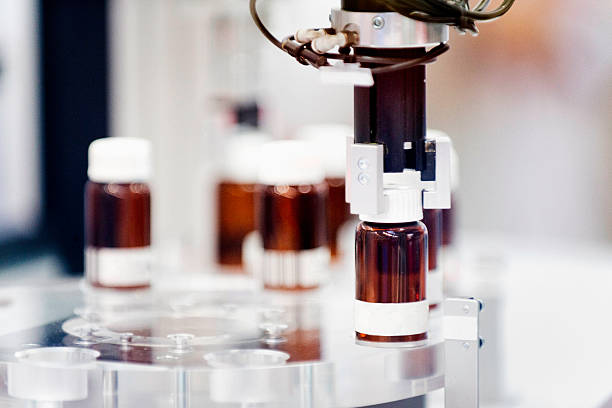Você já se perguntou por que alguns produtos alimentícios atraem compradores instantaneamente enquanto outros passam despercebidos nas prateleiras?? O segredo muitas vezes está na embalagem. O material certo protege o frescor, atende aos padrões regulatórios, aumenta o apelo da marca, e ainda reduz custos em toda a sua cadeia de fornecimento. Neste guia, orientaremos você nos materiais de embalagem de alimentos mais comuns e nas principais dicas de seleção para ajudá-lo a desenvolver embalagens de alto desempenho e prontas para o mercado.
O que é embalagem de comida?
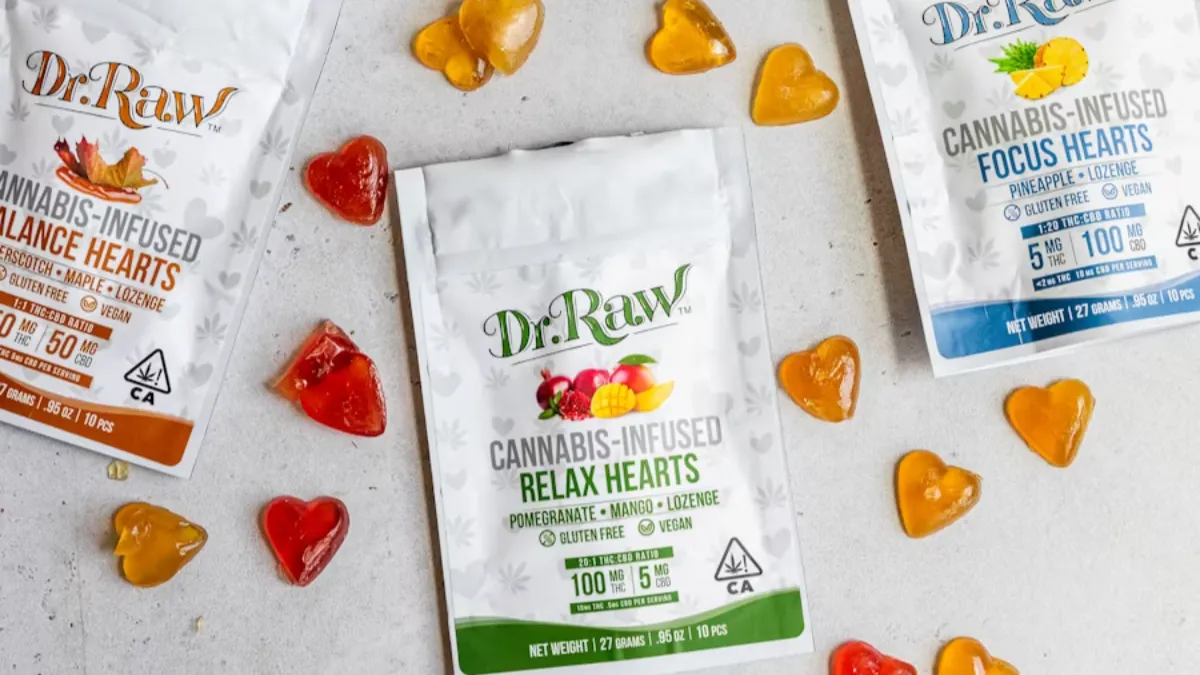
Embalagens de alimentos refere-se aos materiais e métodos usados para conter, proteger, e preservar os alimentos desde a produção até o consumo. Seu principal objetivo é manter os produtos seguros, manter o frescor, e evitar contaminação durante o armazenamento, transporte, e exibir. Resumidamente, é o que torna possível a distribuição de alimentos em grande escala.
Se você trabalha na produção de alimentos ou varejo, você sabe o quanto a embalagem afeta a qualidade do produto. Sem a proteção de barreira correta, umidade, oxigênio, ou a luz pode degradar rapidamente o sabor e a textura. Um exemplo simples: biscoitos sem embalagem hermética perdem a crocância em poucas horas, enquanto a carne selada a vácuo pode permanecer fresca por dias.
Além da proteção, a embalagem também melhora a rastreabilidade e a eficiência nas cadeias de abastecimento modernas. Etiquetas, códigos de barras, e códigos QR permitem rastrear seus produtos, gerenciar inventário, e estar em conformidade com a ISO 22000 ou normas de segurança alimentar HACCP. Ao mesmo tempo, embalagem funciona como ferramenta de comunicação. Mostra aos seus clientes o que há dentro, como usá-lo, e por que é seguro. Para você como fabricante ou distribuidor, rotulagem clara e vedação forte refletem diretamente a qualidade do seu produto e fortalecem a confiabilidade da sua marca.
Materiais mais comumente usados para embalagens de alimentos
Embalagem plástica
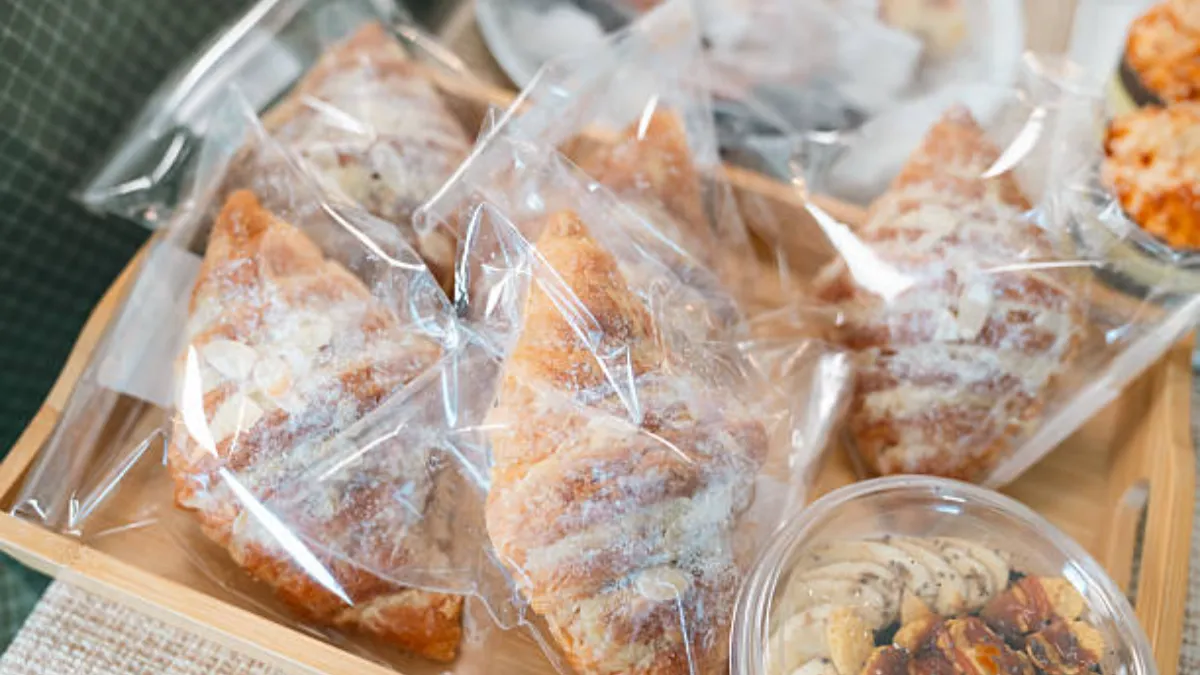
O plástico continua sendo um dos materiais mais versáteis e amplamente utilizados na indústria de embalagens de alimentos. Porque é leve, flexível, e econômico, você provavelmente usa ou vê todos os dias, desde garrafas de bebidas até embalagens de salgadinhos e sacos de comida congelada.
Tipos comuns de plástico:
- BICHO DE ESTIMAÇÃO (Tereftalato de polietileno): Usado para garrafas de bebidas e recipientes para salada. Está claro, durável, e reciclável, tornando-o ideal quando você deseja que seu produto pareça fresco e visível.
- Educação Física (Polietileno): Encontrado em bolsas de leite, sacos de pão, e wraps de alimentos congelados. Fornece forte proteção contra umidade, mas não é tão resistente ao calor.
- Pp (Polipropileno): Adequado para recipientes para microondas e para enchimento a quente porque pode suportar temperaturas mais altas. No entanto, torna-se quebradiço em baixas temperaturas.
- PVC (Cloreto de Polivinila): Frequentemente usado em filmes plásticos e embalagens retráteis, embora muitos fabricantes estejam agora substituindo-o por um mais seguro, materiais mais ecológicos.
Vantagens: O plástico é leve, durável, e forma uma vedação forte para evitar contaminação e prolongar a vida útil.
Desvantagens: Não é biodegradável e pode contribuir para a poluição se não for devidamente reciclado. É por isso que mais empresas estão recorrendo a alternativas recicladas ou de base biológica que mantêm a qualidade e ao mesmo tempo reduzem o desperdício..
Embalagens de papel e papelão
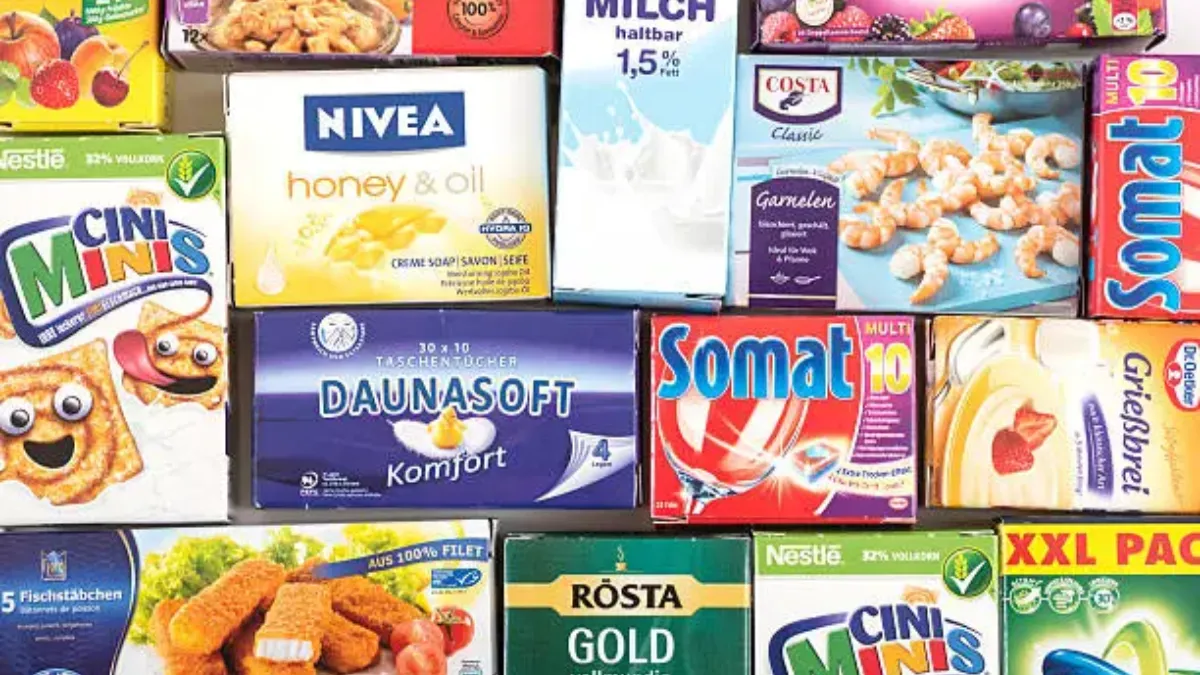
Os materiais à base de papel continuam a ser uma escolha clássica para alimentos secos como cereais, farinha, e lanches. Eles são leves, fácil de imprimir, e atraente para consumidores ambientalmente conscientes.
Principais recursos:
- Fácil de imprimir, tornando-o perfeito para branding e rotulagem.
- Respirável, o que ajuda com alimentos que precisam de circulação de ar.
- Pode ser revestido ou laminado para melhorar a resistência à água e graxa.
Se você trabalha com produtos que contenham líquidos ou óleos, papel comum por si só não será suficiente. Você pode combiná-lo com outros materiais, como alumínio ou filmes biodegradáveis, para criar embalagens multicamadas., que equilibra proteção e sustentabilidade.
Vantagens: Renovável, reciclável, acessível, e fácil de personalizar.
Desvantagens: Propriedades de barreira limitadas contra umidade e oxigênio, e revestimentos podem afetar a reciclabilidade.
Embalagem de vidro
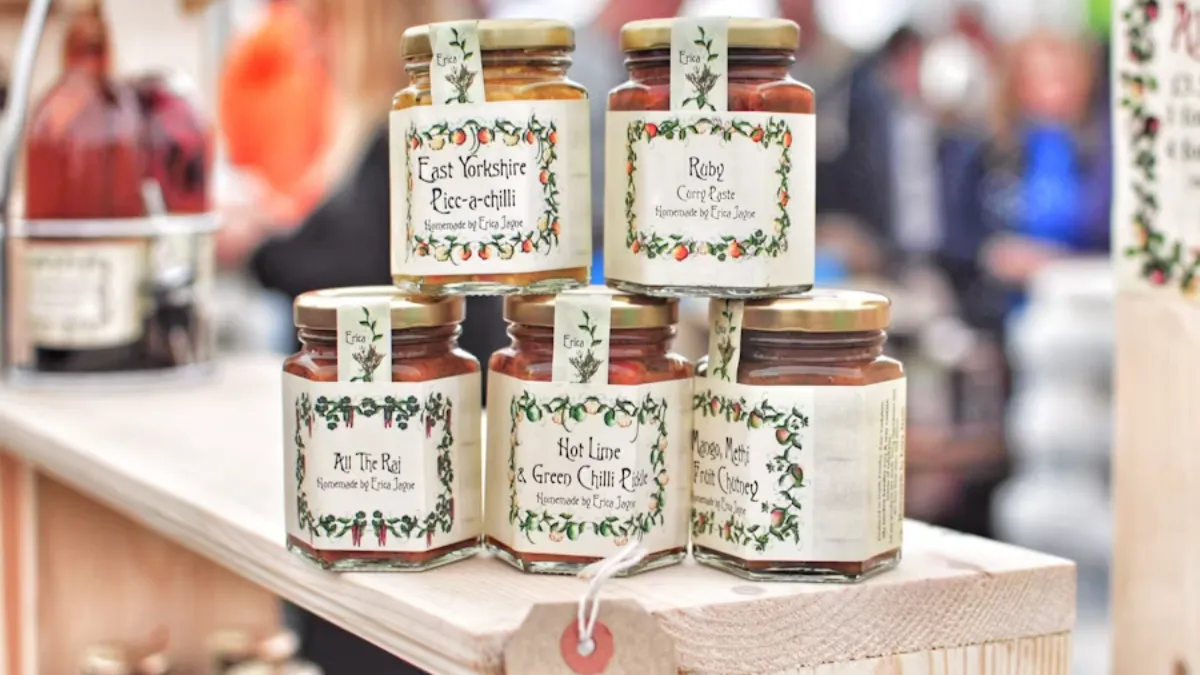
O vidro ainda é um dos favoritos na indústria alimentícia porque preserva o sabor, aroma, e frescor sem interação química. Você frequentemente o verá usado para molhos, geléias, picles, e bebidas premium.
Vantagens:
- Totalmente reciclável e pode ser reutilizado indefinidamente.
- Excelente proteção contra o ar, umidade, e odores.
- Dá aos produtos uma limpeza, visual premium que pode fortalecer a imagem da sua marca.
Desvantagens:
- Pesado e frágil, que aumentam os custos de transporte e os riscos de quebra.
- Requer mais energia para produzir em comparação com papel ou plástico.
Se a sua marca aposta na qualidade e na sustentabilidade, embalagem de vidro é uma escolha forte. Os consumidores costumam associar o vidro à autenticidade e confiança. Essas qualidades podem ajudar seus produtos a se destacarem.
Embalagem Metálica
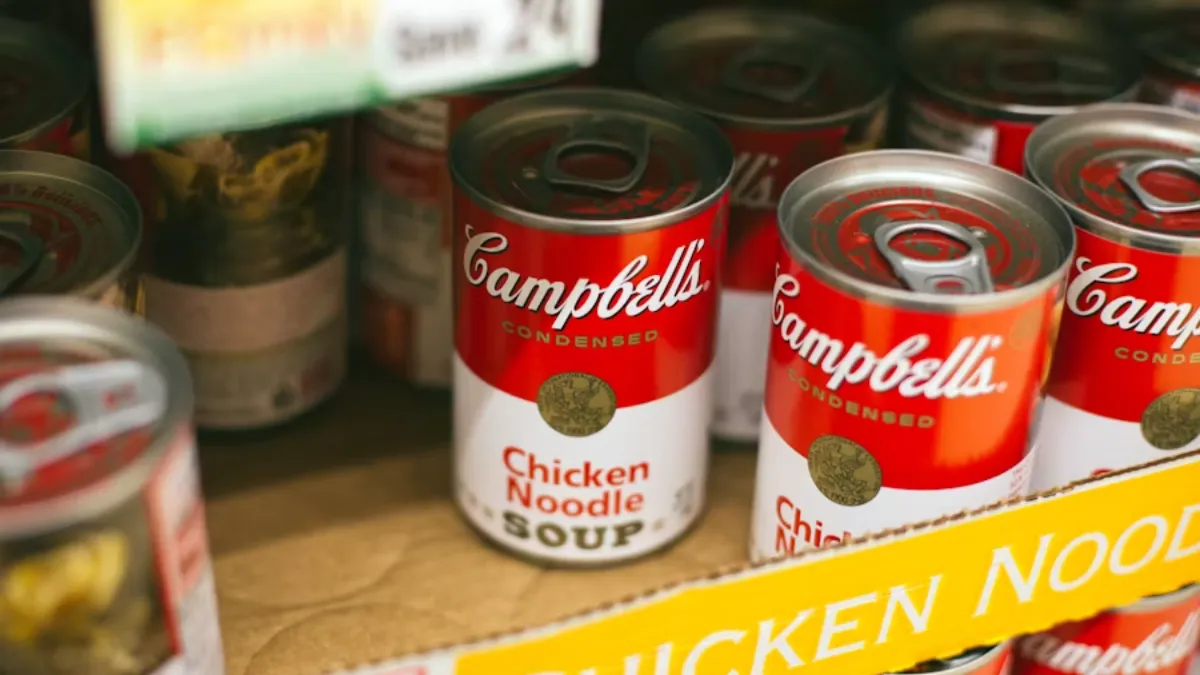
Metais como alumínio e folha-de-flandres têm sido essenciais há décadas na preservação de alimentos. Eles são amplamente utilizados para alimentos enlatados, bebidas, e comida para animais de estimação devido à sua durabilidade e proteção superior.
Principais benefícios:
- Barreira forte contra a luz, ar, e umidade.
- Prolonga a vida útil, o que é especialmente útil se você exporta ou armazena alimentos a longo prazo.
- Altamente reciclável e energeticamente eficiente quando reutilizado.
Desvantagens:
- Mais pesado que o plástico, aumentando os custos logísticos.
- Mais caro de produzir para alimentos com vida útil curta.
Mesmo com essas desvantagens, embalagens metálicas continuam sendo uma opção confiável e sustentável, especialmente quando a segurança e a longevidade do produto são as principais prioridades.
Materiais Biodegradáveis e Compostáveis
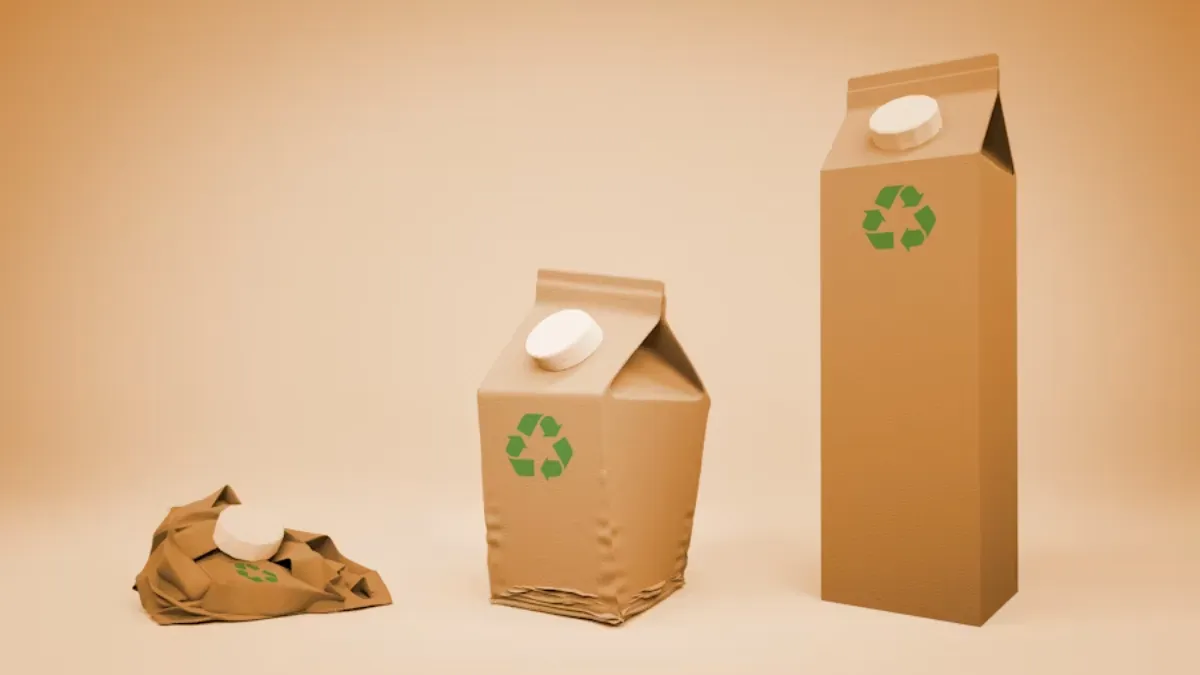
A crescente demanda por sustentabilidade empurrou a indústria de embalagens para materiais biodegradáveis e compostáveis. Você verá opções como PLA (Ácido Polilático), filmes de celulose, e plásticos à base de amido ganhando popularidade.
Vantagens:
- Decompor-se naturalmente em condições de compostagem, reduzindo resíduos em aterros.
- Menor pegada de carbono em comparação com os plásticos tradicionais.
- Melhore a imagem da sua marca entre clientes ambientalmente conscientes.
Desvantagens:
- Custo mais elevado em comparação com plásticos padrão.
- Exigir condições específicas de compostagem para se decompor adequadamente.
- Resistência limitada ao calor, o que os torna menos adequados para alimentos quentes.
Se você pretende construir uma marca mais verde, explorar embalagens biodegradáveis é um passo inteligente. A tecnologia por trás desses materiais está melhorando rapidamente, ajudando você a equilibrar o desempenho, sustentabilidade, e custo.
Como escolher o material certo para embalagem de alimentos
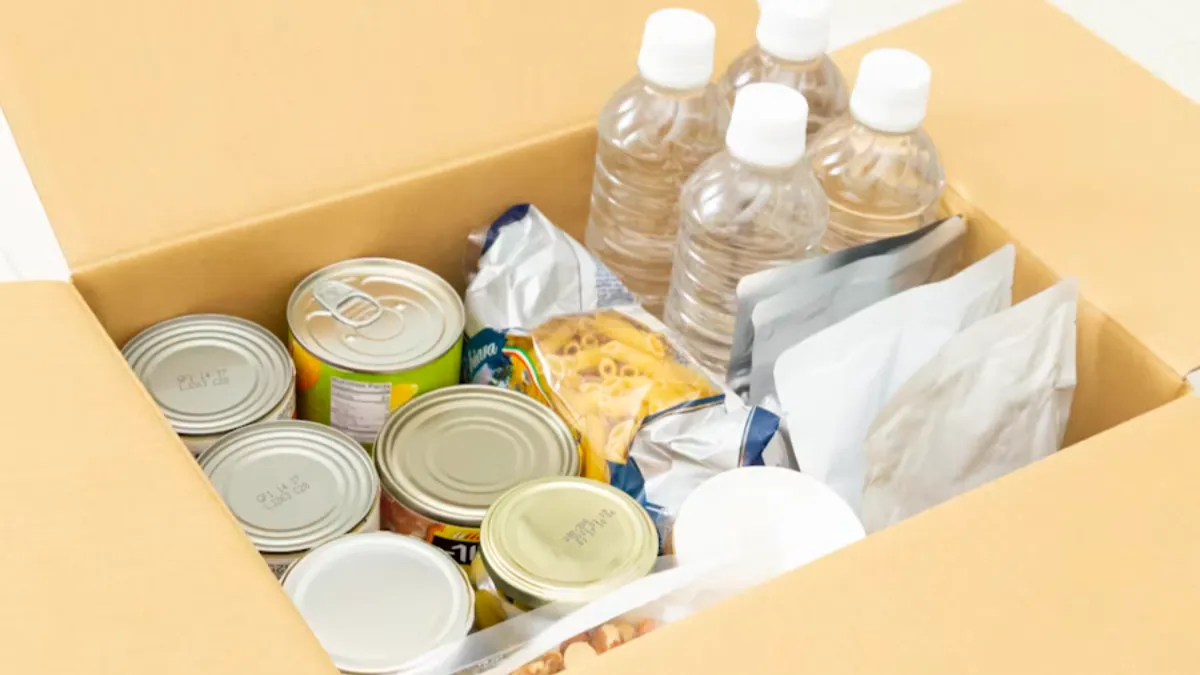
Entenda a natureza dos alimentos
Comece fazendo uma pergunta simples: O que estou embalando?
Alimentos diferentes têm necessidades muito diferentes. Por exemplo:
- Alimentos secos como cereais ou massas, precisam de materiais que permitam algum fluxo de ar, mas evitem a entrada de umidade - papelão ou papel laminado funcionam bem.
- Alimentos úmidos ou oleosos como molhos, queijo, ou refeições prontas requerem fortes barreiras à umidade, como laminados plásticos ou filmes metalizados.
- Produtos congelados precisam de embalagens que resistam a baixas temperaturas e evitem rachaduras, como polietileno (Educação Física).
Quanto melhor você entender as propriedades físicas e químicas do seu produto, mais fácil será encontrar um material que o mantenha seguro e atraente.
Considere as condições de armazenamento e transporte
Pense em onde e como os alimentos serão armazenados e transportados. Se o seu produto viajar longas distâncias ou enfrentar temperaturas flutuantes, durabilidade e proteção de barreira são fundamentais.
- Para exportações de longa distância: Escolha materiais como metal ou plástico multicamadas que resistam à pressão e protejam contra oxigênio e luz.
- Para alimentos refrigerados ou congelados: Use filmes flexíveis que mantenham a integridade em baixas temperaturas.
- Para distribuição local: Opções de papel e biodegradáveis podem ser adequadas se o prazo de validade do produto for menor.
Uma boa regra prática? Sua embalagem deve ter um desempenho tão bom no ponto de venda final quanto quando sai da fábrica.
Alinhe-se com sua marca e metas de sustentabilidade
Quando você escolhe a embalagem, pense além da proteção e da logística. O material, textura, e veja todos contarem uma história sobre sua marca. Uma garrafa de vidro transparente, por exemplo, comunica pureza e qualidade, enquanto o papel kraft dá uma impressão natural e ecologicamente correta. Essas dicas visuais e táteis moldam a forma como os clientes percebem seu produto muito antes mesmo de experimentá-lo.
Os consumidores de hoje prestam muita atenção ao quão sustentável é uma embalagem. Mais empresas estão migrando para plásticos recicláveis, filmes compostáveis, ou materiais de base biológica feitos de amido de milho ou cana-de-açúcar. Se você está explorando soluções mais ecológicas, mas ainda precisa manter os custos gerenciáveis, tente combinar materiais. Papel revestido com uma fina camada biodegradável, por exemplo, pode oferecer durabilidade e sustentabilidade sem um grande salto de preço.
Considere o custo e a escalabilidade
Finalmente, praticidade é importante. Materiais de alta qualidade ficam ótimos, mas eles também devem se adequar à sua escala de produção e orçamento. Se você planeja crescer rapidamente, escolha materiais que sejam fáceis de obter e compatíveis com máquinas automatizadas de envase ou selagem. As estratégias de embalagem mais bem-sucedidas equilibram o desempenho, eficiência de custos, e sustentabilidade, sem comprometer a segurança do seu produto ou a imagem da marca.
Pensamentos finais
As embalagens de alimentos podem parecer simples à primeira vista, mas como você viu, desempenha um papel importante na proteção de seus produtos, moldando a percepção do cliente, e até mesmo reduzindo custos a longo prazo. O material e o design certos podem elevar sua marca, enquanto a escolha errada pode minar silenciosamente a confiança e a qualidade. Se você está planejando sua próxima atualização de embalagem, vale a pena se perguntar: A sua solução atual realmente corresponde aos valores e objetivos de mercado da sua marca??
Se você está pronto para levar seu processo de embalagem de alimentos para o próximo nível, nós em CHLB estamos aqui para apoiá-lo. Como fabricante profissional de máquinas de embalagem de alimentos com anos de experiência, somos especializados em desenvolver soluções eficientes, confiável, e equipamentos ecologicamente corretos que ajudam produtores e exportadores de alimentos a trabalhar de maneira mais inteligente. De sistemas flexíveis de enchimento de bolsas para totalmente linhas de embalagem automatizadas, nossas máquinas são projetadas para melhorar a produtividade, reduzir o desperdício, e atingir suas metas de sustentabilidade. Seja qual for a sua necessidade de produção, podemos construir a solução certa para ajudar sua empresa a crescer com confiança.
Se você está pronto para repensar como seus produtos são embalados e apresentados, entre em contato conosco hoje para explorar como podemos ajudá-lo a criar embalagens que funcionem de maneira mais inteligente para o seu negócio.


